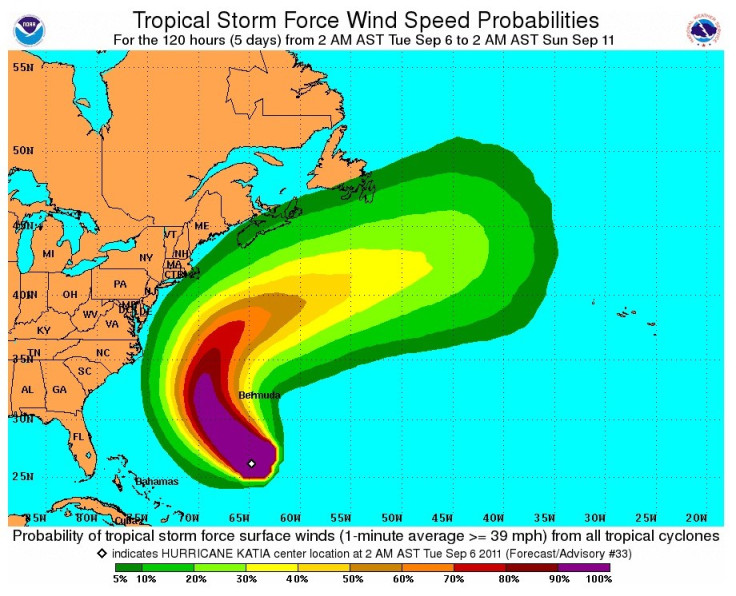Hurricane Katia to Hit UK: What to do in Severe Weather

Hurricane Katia is now heading for the UK and Ireland, and is expected to reach Ireland by Monday Sept. 12 and Britain by Tuesday Sept. 13, as it is now off the coast of Bermuda.
Forecasters say places set to be the most affected by the remnants of the hurricane are likely to be the islands off Scotland with torrential rains expected to batter parts of the coastline.
With waves expected to reach 50 feet and winds of 10 miles per hour, a severe weather warning has now been issued for Scotland, Ireland, Northern England, West Wales, and Cornwall and Devon and the Met Office has warned of traffic disruption and structural damage.
Here are the advices the Met office recommend to follow in case of severe weather :
Before the storm
- Secure loose objects such as ladders, garden furniture or anything else that could be blown into windows and other glazing and break them.
- Close and securely fasten doors and windows, particularly those on the windward side of the house, and especially large doors such as those on garages.
- Park vehicles in a garage, if available; otherwise keep them clear of buildings, trees, walls and fences.
- Close and secure loft trapdoors with bolts, particularly if roof pitch is less than 30°.
- If the house is fitted with storm shutters over the windows then ensure that these are closed and fastened.
- If chimney stacks are tall and in poor condition, move beds away from areas directly below them.
During the storm
- Stay indoors as much as possible.
- If you do go out, try not to walk or shelter close to buildings and trees.
- Keep away from the sheltered side of boundary walls and fences - if these structures fail, they will collapse on this side.
- Do not go outside to repair damage while the storm is in progress.
- If possible, enter and leave your house through doors in the sheltered side, closing them behind you.
- Open internal doors only as needed, and close them behind you.
- Take care when driving on exposed routes such as bridges, or high open roads, delay your journey or find alternative routes if possible.
- Slow down and be aware of side winds, particular care should be taken if you are towing or are a high sided vehicle.
- Do not drive unless your journey is really necessary.
After the storm
- Be careful not to touch any electrical/telephone cables that have been blown down or are still hanging.
- Do not walk too close to walls, buildings and trees as they could have been weakened.
- Make sure that any vulnerable neighbours or relatives are safe and help them make arrangements for any repairs.
© Copyright IBTimes 2025. All rights reserved.





















